James Theiler
Physics and Deep Learning in Computational Wave Imaging
Oct 10, 2024



Abstract:Computational wave imaging (CWI) extracts hidden structure and physical properties of a volume of material by analyzing wave signals that traverse that volume. Applications include seismic exploration of the Earth's subsurface, acoustic imaging and non-destructive testing in material science, and ultrasound computed tomography in medicine. Current approaches for solving CWI problems can be divided into two categories: those rooted in traditional physics, and those based on deep learning. Physics-based methods stand out for their ability to provide high-resolution and quantitatively accurate estimates of acoustic properties within the medium. However, they can be computationally intensive and are susceptible to ill-posedness and nonconvexity typical of CWI problems. Machine learning-based computational methods have recently emerged, offering a different perspective to address these challenges. Diverse scientific communities have independently pursued the integration of deep learning in CWI. This review delves into how contemporary scientific machine-learning (ML) techniques, and deep neural networks in particular, have been harnessed to tackle CWI problems. We present a structured framework that consolidates existing research spanning multiple domains, including computational imaging, wave physics, and data science. This study concludes with important lessons learned from existing ML-based methods and identifies technical hurdles and emerging trends through a systematic analysis of the extensive literature on this topic.
Sculpting priors
Aug 08, 2024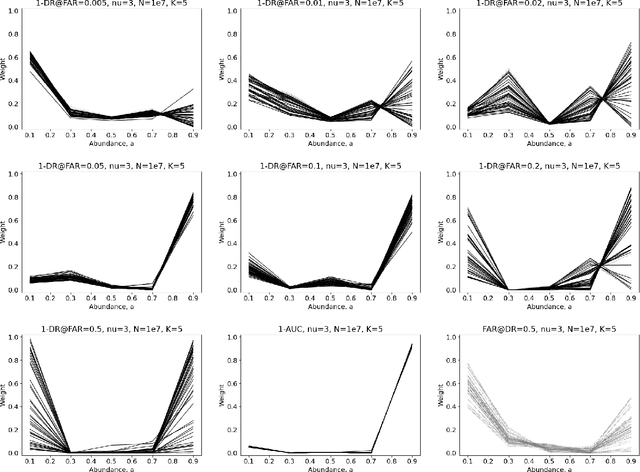
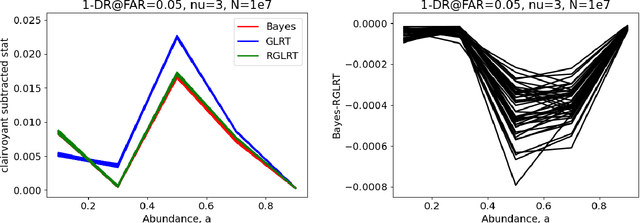
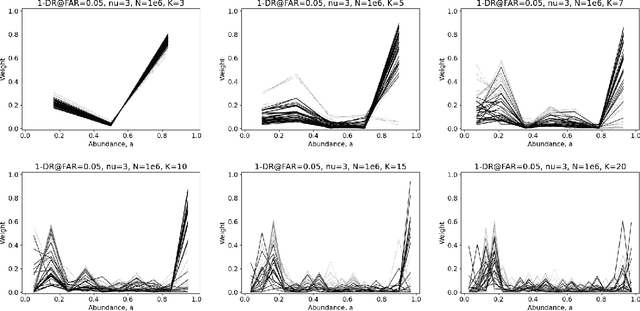
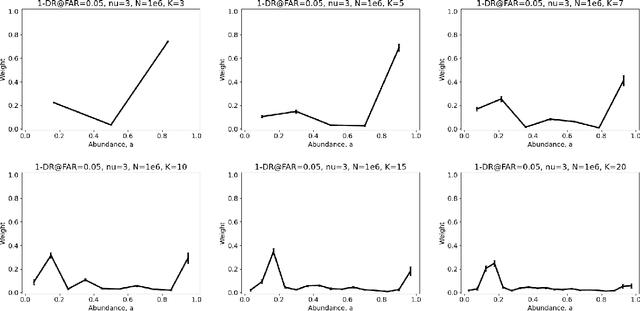
Abstract:Bayesian priors are investigated for detecting targets of known spectral signature (but unknown strength) in cluttered backgrounds. A specific problem is the construction (or ``sculpting'') of a Bayesian prior that uniformly outperforms its non-Bayesian counterpart, the nominally sub-optimal but widely used Generalized Likelihood Ratio Test (GLRT).
Homeopathic priors?
Dec 06, 2022
Abstract:The problem of composite hypothesis testing is considered in the context of Bayesian detection of weak target signals in cluttered backgrounds. (A specific example is the detection of sub-pixel targets in multispectral imagery.) In this model, the target strength (call it $a$) is unknown and acts as a nuisance parameter. This nuisance may be addressed by incorporating a prior over possible parameter values. The performance of the detector depends on the choice of prior, and -- with the motivation of enabling better performance at low target abundances -- a family of priors are investigated in which singular weight is associated with the $a\to 0$ limit. Careful treatment of this limiting process leads to a situation in which components of the prior with infinitesimal weight have nontrivial effects. Similar claims have been made for homeopathic medicines.
Physics-Consistent Data-driven Waveform Inversion with Adaptive Data Augmentation
Sep 03, 2020

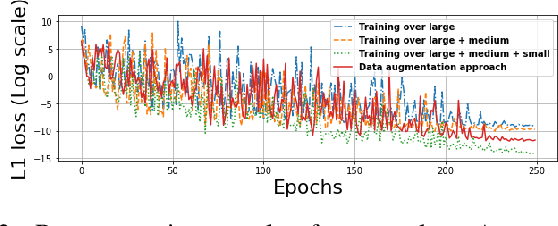
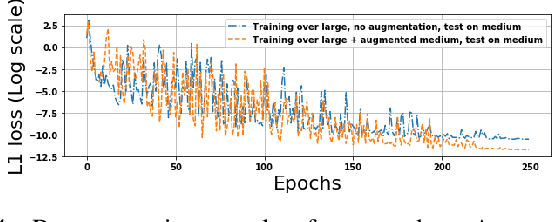
Abstract:Seismic full-waveform inversion (FWI) is a nonlinear computational imaging technique that can provide detailed estimates of subsurface geophysical properties. Solving the FWI problem can be challenging due to its ill-posedness and high computational cost. In this work, we develop a new hybrid computational approach to solve FWI that combines physics-based models with data-driven methodologies. In particular, we develop a data augmentation strategy that can not only improve the representativity of the training set but also incorporate important governing physics into the training process and therefore improve the inversion accuracy. To validate the performance, we apply our method to synthetic elastic seismic waveform data generated from a subsurface geologic model built on a carbon sequestration site at Kimberlina, California. We compare our physics-consistent data-driven inversion method to both purely physics-based and purely data-driven approaches and observe that our method yields higher accuracy and greater generalization ability.
Deep Snow: Synthesizing Remote Sensing Imagery with Generative Adversarial Nets
May 18, 2020Abstract:In this work we demonstrate that generative adversarial networks (GANs) can be used to generate realistic pervasive changes in remote sensing imagery, even in an unpaired training setting. We investigate some transformation quality metrics based on deep embedding of the generated and real images which enable visualization and understanding of the training dynamics of the GAN, and may provide a useful measure in terms of quantifying how distinguishable the generated images are from real images. We also identify some artifacts introduced by the GAN in the generated images, which are likely to contribute to the differences seen between the real and generated samples in the deep embedding feature space even in cases where the real and generated samples appear perceptually similar.
Cycle-Consistent Adversarial Networks for Realistic Pervasive Change Generation in Remote Sensing Imagery
Dec 08, 2019
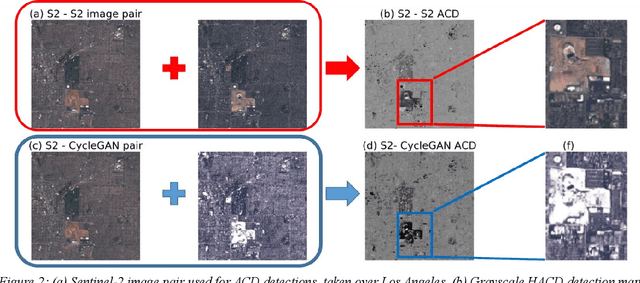
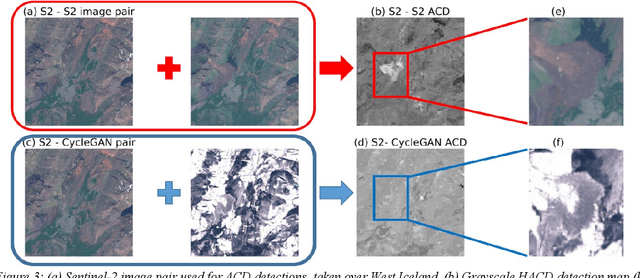
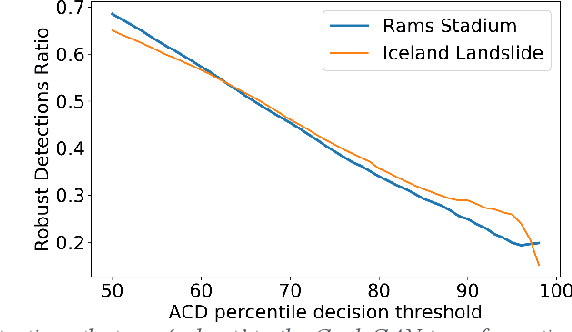
Abstract:This paper introduces a new method of generating realistic pervasive changes in the context of evaluating the effectiveness of change detection algorithms in controlled settings. The method, a cycle-consistent adversarial network (CycleGAN), requires low quantities of training data to generate realistic changes. Here we show an application of CycleGAN in creating realistic snow-covered scenes of multispectral Sentinel-2 imagery, and demonstrate how these images can be used as a test bed for anomalous change detection algorithms.
Closed-form detector for solid sub-pixel targets in multivariate t-distributed background clutter
Apr 28, 2018
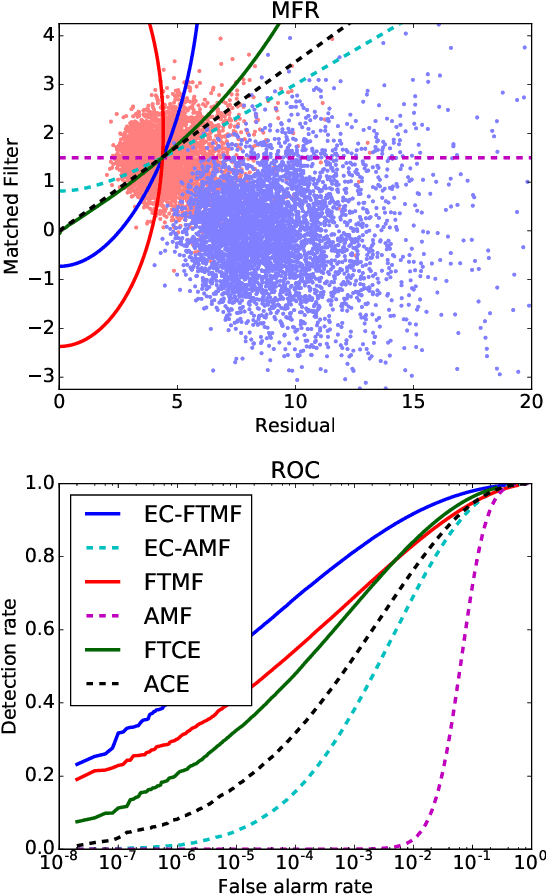
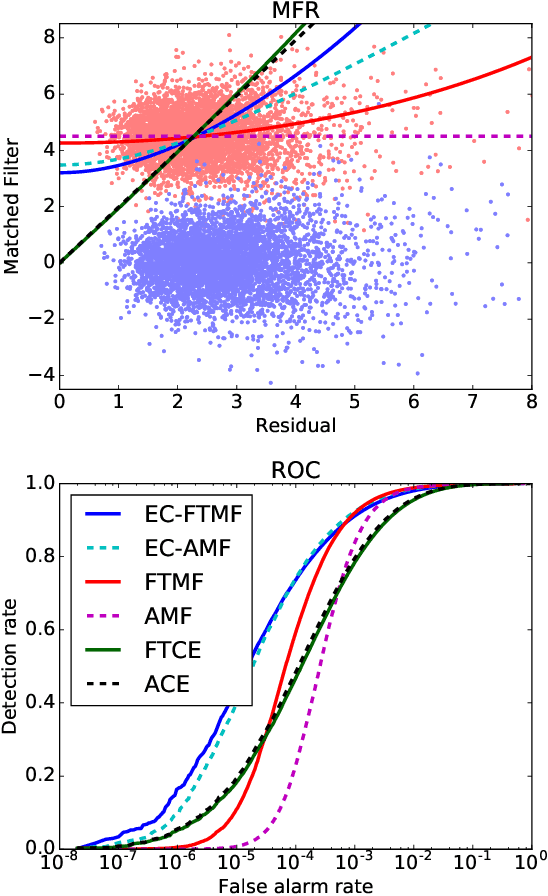
Abstract:The generalized likelihood ratio test (GLRT) is used to derive a detector for solid sub-pixel targets in hyperspectral imagery. A closed-form solution is obtained that optimizes the replacement target model when the background is a fat-tailed elliptically-contoured multivariate t-distribution. This generalizes GLRT-based detectors that have previously been derived for the replacement target model with Gaussian background, and for the additive target model with an elliptically-contoured background. Experiments with simulated hyperspectral data illustrate the performance of this detector in various parameter regimes.
 Add to Chrome
Add to Chrome Add to Firefox
Add to Firefox Add to Edge
Add to Edge